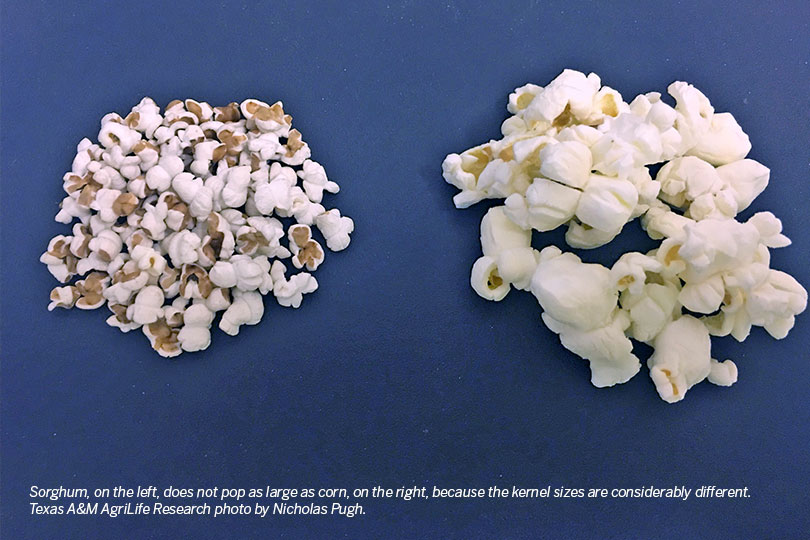By Jennifer Whitlock
Field Editor
Popcorn is one of America’s favorite snacks, with American farmers producing 1.07 billion pounds of popcorn in 2017 alone, according to the latest Census of Agriculture data.
But popcorn has a new competitor—popped sorghum.
And Texas A&M University AgriLife Research scientists recently released a new hybrid sorghum variety developed specifically for popping.
Choosing varieties for popping traits is a notable shift in sorghum hybrid development, according to Mitchell Kent, Texas A&M University graduate research assistant.
Popped sorghum is a good snack food choice with untapped market potential, Kent noted.
“Compared to popcorn, popped sorghum has a smaller popped kernel size. This quality makes it ideal in products where popcorn is too large to be used, like granola bars or candies,” he said. “In addition, popped sorghum doesn’t have a strong flavor, which makes it desirable for added flavoring. The popped grain of sorghum is also more tender than popcorn and doesn’t contain hulls.”
In the U.S., sorghum is mostly used for animal feed either as grain, chopped silage or forage. While Southerners once relied heavily on sorghum syrup, the regional delicacy waned around the end of World War I as refined sugar cane became cheaper and more available.
But over the past few years, interest in sorghum for human consumption has resurged. Sorghum is naturally gluten-free and is not genetically modified, and Kent noted some varieties are good sources of antioxidants, as well.
And popped sorghum is a particularly intriguing application of the versatile crop. He explained some genotypes produce a white, fluffy piece of popped endosperm when subjected to high heat, just like popping corn varieties.
“But the starch and protein in popped sorghum is more digestible than in the un-popped grain,” he said. “This could lead to an increase of popped sorghum flour-based products and animal feed.”
Along with a high popping efficiency, the hybrids developed by Kent and his mentor, Dr. Bill Rooney, have good expansion ratios, or how much volume the grain gains when popped, and flake sizes, which refers to the size of individual pieces of popped sorghum.
“The hybrids we released are high yielding, agronomically adapted grain sorghum that can be used in the popped grain industry,” Kent said.
The hybrids’ technical names are Tx3489 and Tx3490.
While these lines can be used as pollinator parents to produce grain sorghum hybrids for popping, they may also be a parent for the development of new pop sorghum parental lines, Kent and Rooney wrote in a paper published in the Journal of Plant Registrations, a publication of the Crop Science Society of America.

